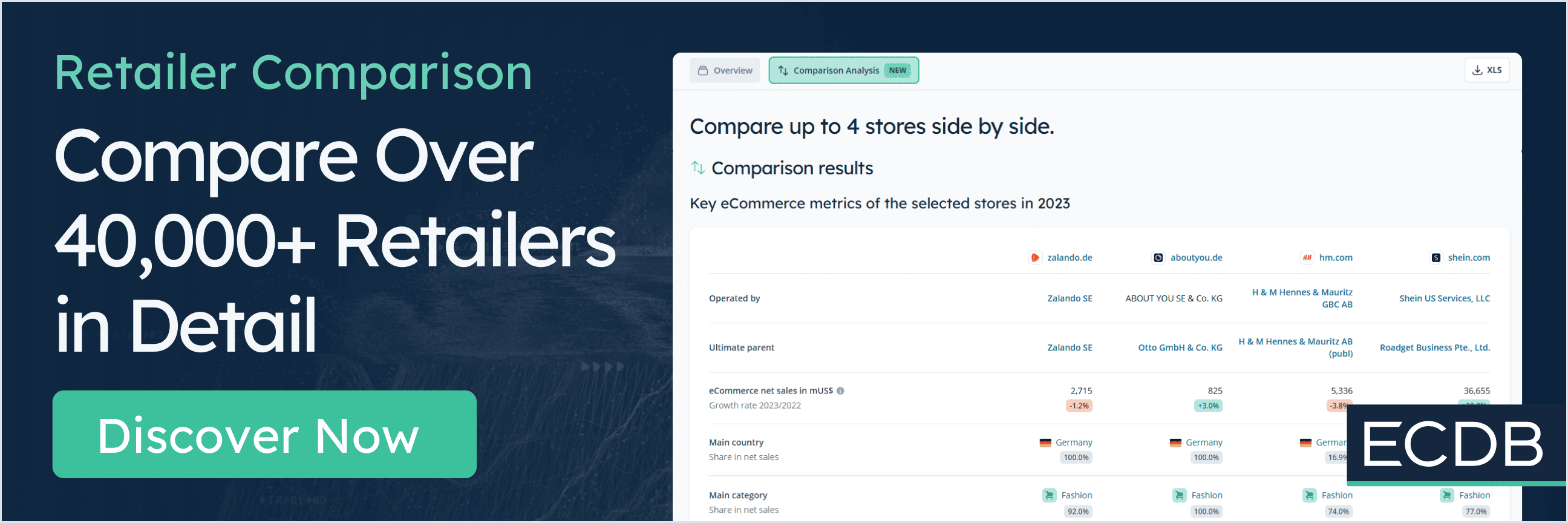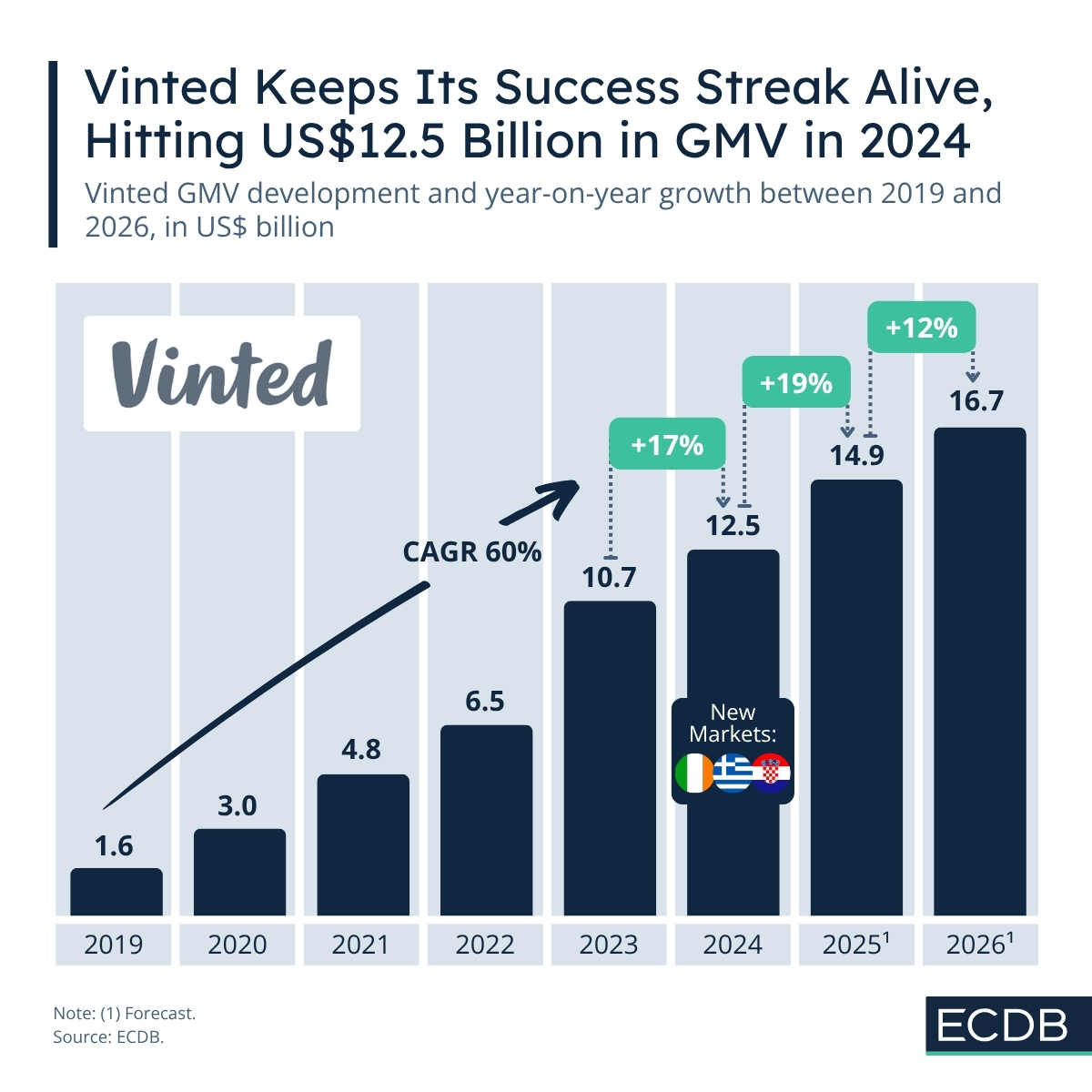Ever heard of a unicorn company? It describes a start-up that has seen significant growth and success without going public and is valued over US$1 billion. One of those unicorns is the marketplace Vinted. The way this eCommerce player has become one of the most successful Fashion platforms in Europe may suprise you – we did the research for you.
The Road Map of Vinted to International Success
Vinted has its roots in Vilnius, Lithuania, where Milda Mitkute and Justas Janauskas launched it in 2008 under the name "Miju Project". Over the years, the Fashion marketplace has entered over 20 European markets – including Germany, France, and the Netherlands – as well as the United States and Canada. In 2019, Vinted surpassed the US$1 billion mark with a gross merchandise value of US$1.6 billion.
But the success didn't end there. The following year, the marketplace almost doubled its GMV to US$3.0 billion, partly thanks to the pandemic. In the same year, Vinted merged and renamed local marketplaces such as "Mamikreisel" and "Kleiderkreisel" in Germany, resulting in a unified global presence under the name "Vinted."
By 2024, Vinted had achieved a total GMV of US$12.5 billion, and the company’s ambitions show no signs of slowing. Last year, the company entered three new markets: Croatia, Greece, and Ireland. Additionally, in response to member demand, the platform recently added new categories, such as luxury Fashion and Electronics. This makes products with a higher purchase value available, which could give the GMV a new push.
Vinted’s Investment Beyond Fashion: Vinted Go, Vinted Pay, & Vinted Ventures
Vinted was just a small secondhand shopping startup almost a decade ago. Today, it is one of the largest reCommerce marketplaces in Europe. To maintain its success, the company has begun investing in areas outside Fashion products:
One major step in the past year was the launch of Vinted Go. The logistics business offers low-cost shipping through a network of lockers and pick-up/drop-off points. It began with tests in France and the Benelux countries, until Vinted expanded it this year into Spain and Portugal. Vinted Go offers users more affordable and convenient shipping options, while it strengthens the company’s control over the logistics chain.
In parallel, the platform introduced Vinted Pay in Lithuania. The payment service aims to reduce costs and ensure safer transactions on Vinted. It could also be an attempt to discourage members from shopping through payment systems that do not run through the Vinted shop system, as the platform generates revenue through those transactions.
In addition to operational improvements, the marketplace established Vinted Ventures. Through this initiative, Vinted began investing in tech companies, facing challenges in reCommerce.
Secondhand Shopping as More Than a Just a Shopping Trend
In addition to the different product categories, the marketplace offers a platform for inspiration and social interaction. Users can follow other members if they like their style or personality, and communicate via the chat function. Thus, Vinted has created its own community, which has contributed to its success.
Along with its recent expansions, Vinted continues to rise amid the growing success of the reCommerce market. As of today, the company is on track to reach a GMV of US$16.7 billion by 2026, a 39% increase compared to 2019. For a platform that has been around for over 15 years, this is an impressive feat.










